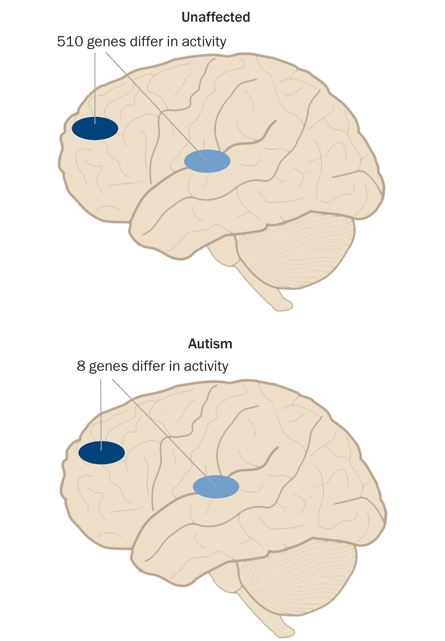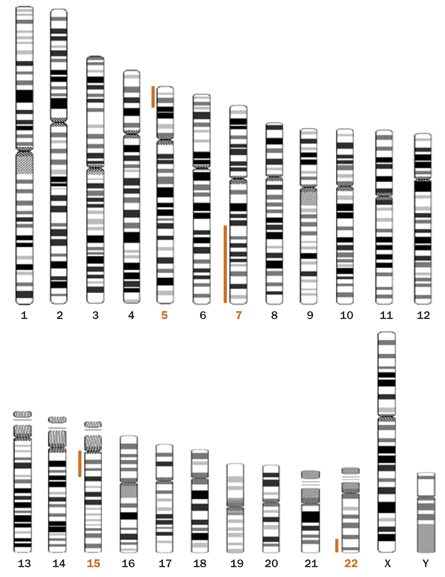Clues to autism’s roots from brain study
Analysis finds differences in gene activity
- More than 2 years ago
Though autism and related disorders vary widely from person to person, certain brain changes may be at the root of the disorder.
Changes in genes important for brain-cell development and function contribute to the poorly understood disorder, a study published online May 25 in Nature shows. Finding genetic contributors to the multifaceted disease might help scientists design better ways to treat it.

“For us to be able to develop specific therapies that treat the cause, you have to understand the genetics,” says pediatrician and autism researcher Hakon Hakonarson of the Children’s Hospital of Philadelphia.
In the study, a team led by Daniel Geschwind of UCLA analyzed post-mortem tissue from the brains of 19 people with autism and 17 without. Patterns of gene activity differed in the two types of brains, as measured by levels of RNA molecules, which shuttle information from DNA to the protein factories in cells. In the healthy brains, hundreds of genes behaved differently depending whether they were found in the frontal or the temporal region of the brain. But in the autistic brains, only a handful of genes acted differently in the two areas. This lack of distinction may be set on course very early in a child’s life, Geschwind says.
Many of the genes identified by the research are important for brain development and behavior. What’s more, the changes in the autism spectrum disorder brains were very similar to each other. “It looks like there’s a common pathology in autism, which is a surprising thing,” Geschwind says. “In spite of having many different causes, there’s some shared convergence.”
The researchers pinpointed a number of genes involved in brain development and function that have already been tied to autism by previous studies. Changes in the activity of one particular gene, A2BP1, appeared to profoundly affect the autistic brains.
“We didn’t expect to see how generally important this gene looks,” Geschwind says. “It looks to be one of the things that has major dysregulation in the brains of autistic kids.”
The new study doesn’t identify the ultimate cause of autism spectrum disorders, Geschwind says, but the results do offer a glimpse into the autistic brain. “It gives us an anchor. A toehold,” he says. “A place to start to look and see what’s specific to autism and what isn’t.”
Backstory | A GENETIC PUZZLE
Autism spectrum disorders are highly heritable, but like many complex disorders they can’t be pinned to a single genetic flaw. Though many genetic changes have been associated with the disorder (the locations of some are shown here on the human chromosomes), each one accounts for only a small fraction of cases.

Chromosome 5
Several single-letter DNA changes at one end of chromosome 5 (orange line) have been associated with autism, but each of these variations appears to contribute only a very small amount to a person’s risk of developing autism.
Chromosome 7
By studying inheritance patterns in families with autistic members, scientists have found a region of chromosome 7 (orange line) that appears to be relevant to the condition. Genes that tell nerve cells how to hook up with each other as the brain grows are located here.
Chromosome 15
About 1 percent of people with autism have duplications of a stretch of chromosome 15 (orange line). Large-scale duplications, deletions and rearrangements in other parts of the genome have also been linked to autism.
Chromosome 22
Mutations in a gene at one end of chromosome 22 (orange line) that is involved in nerve cell communication, SHANK3, are linked to some cases of one nonverbal form of autism. These mutations seem to arise spontaneously rather than being inherited.







